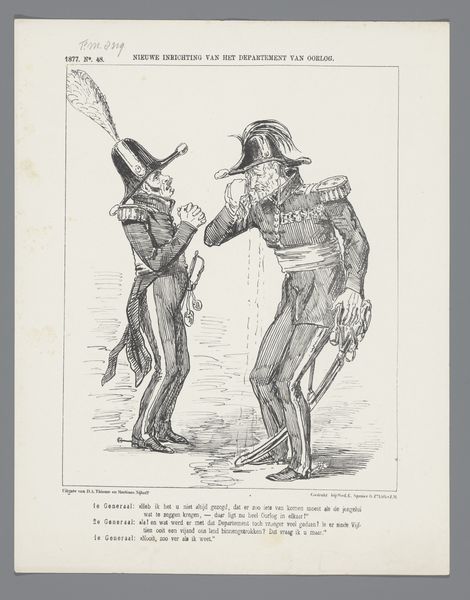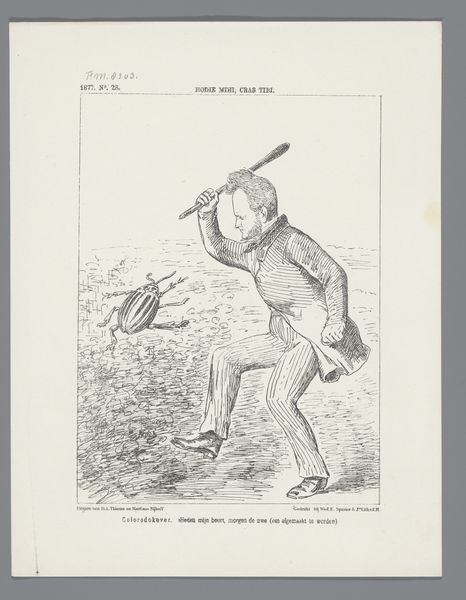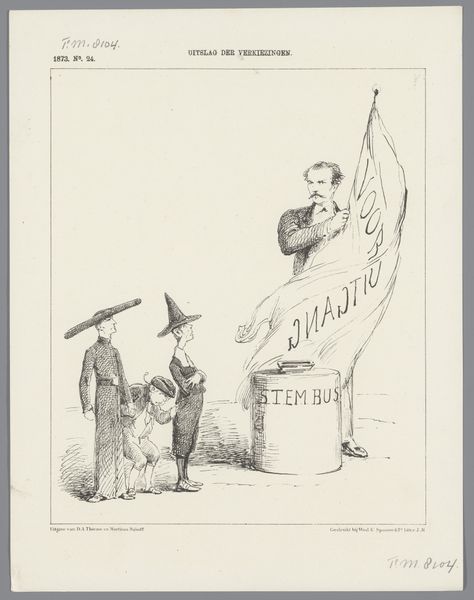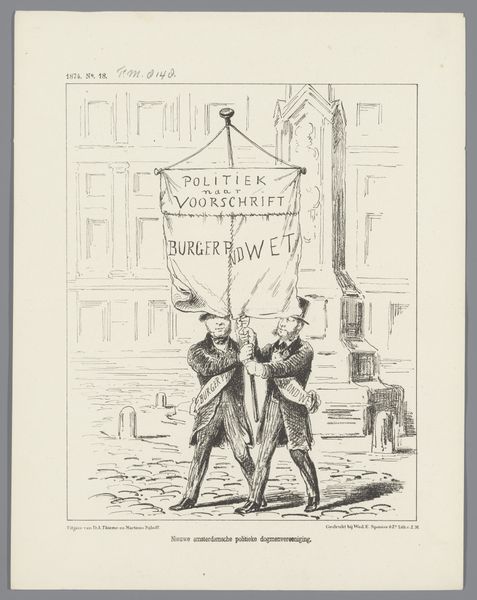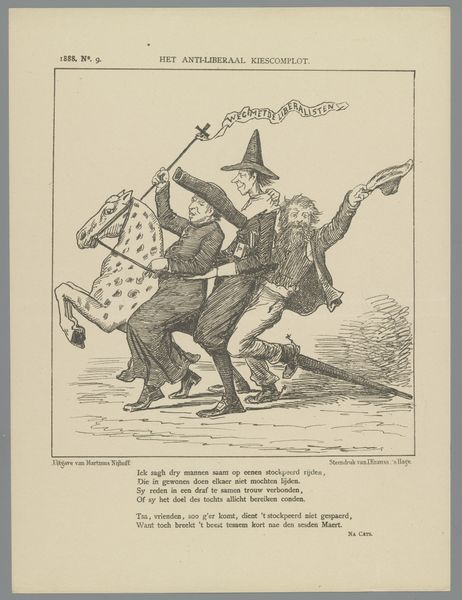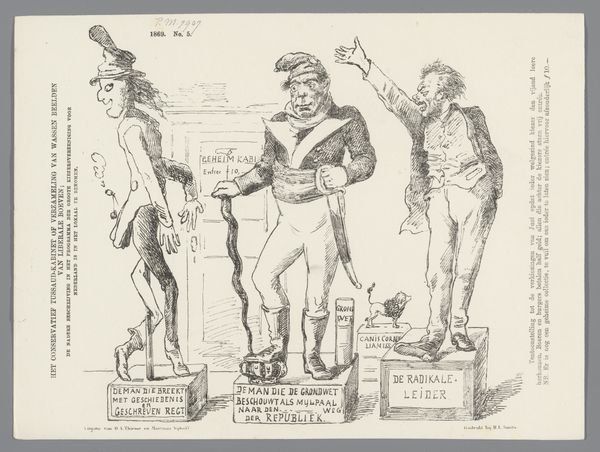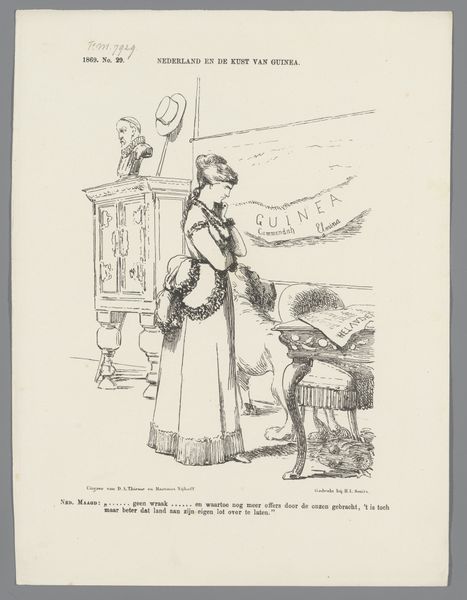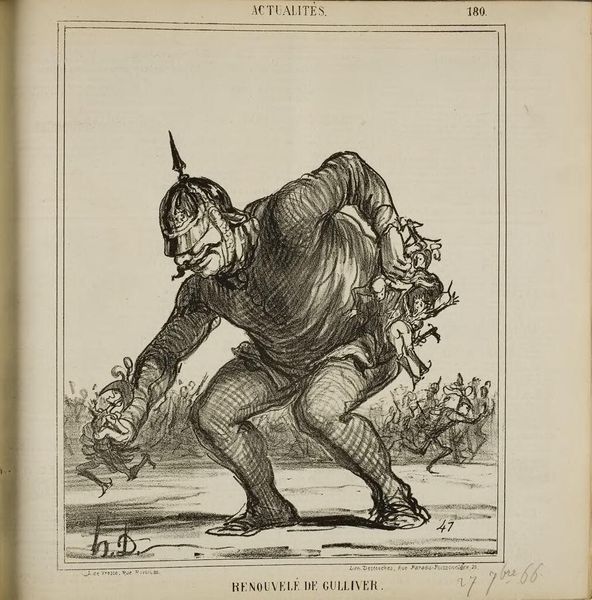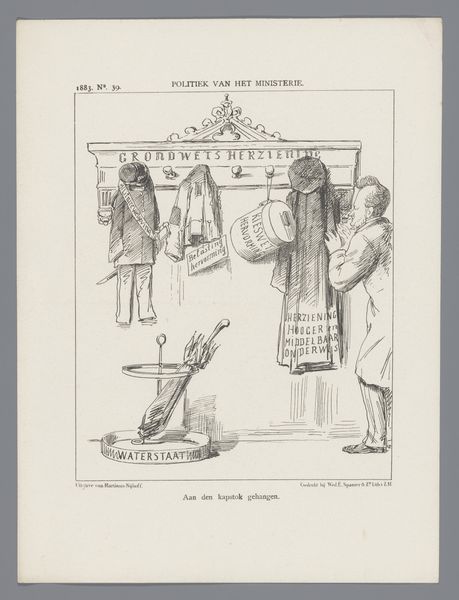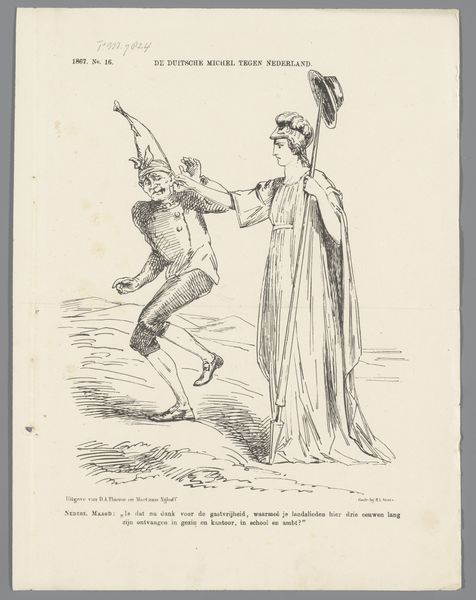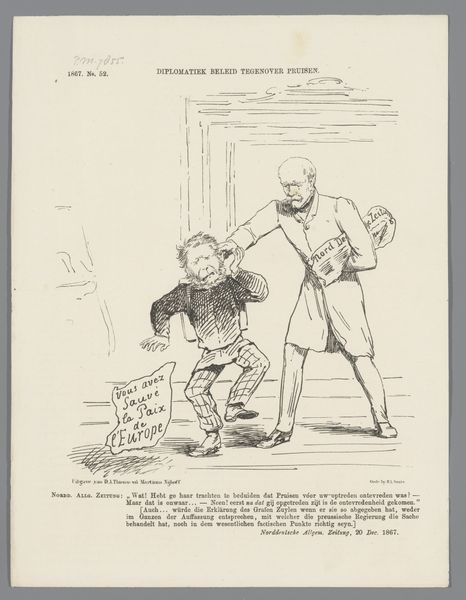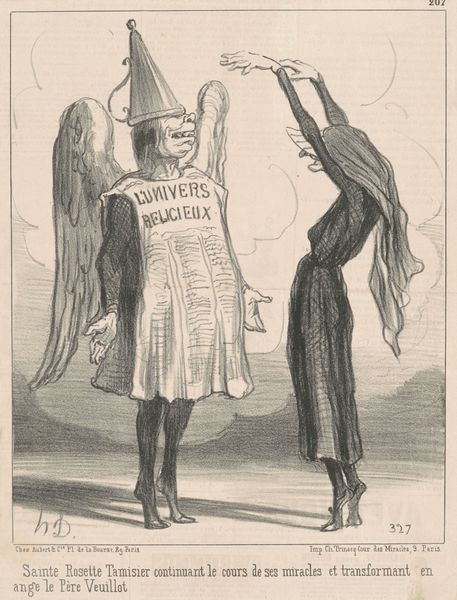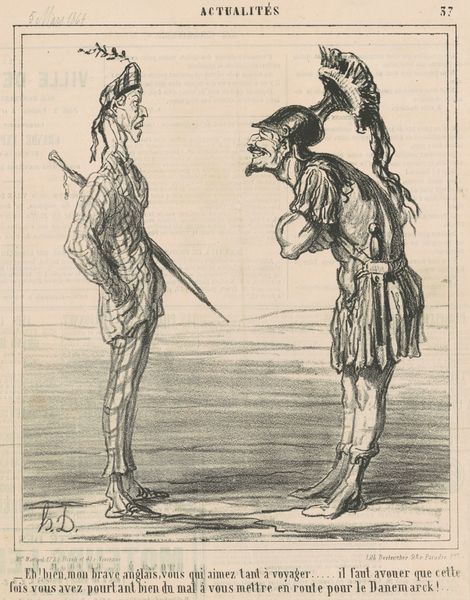
drawing, print, paper, ink, engraving
#
drawing
# print
#
caricature
#
paper
#
ink
#
engraving
Dimensions: height 275 mm, width 215 mm
Copyright: Rijks Museum: Open Domain
Editor: This print, created in 1874 by Johan Michaël Schmidt Crans, is called "Spotprent op de verwerping van de muntwet, 1874". The use of ink and engraving on paper gives it a very direct, almost raw feel. What do you make of its symbolism and imagery? Curator: What strikes me is the intersection of material representation and socio-political critique. Consider the engraving itself – a relatively accessible medium at the time, implying a wider intended audience. We see the figure, identified as "Monzongo," and the deliberate depiction intended to caricature. It reduces complex political issues to simple symbolism. What commentary do you think Crans is offering about colonial perceptions of other cultures and how these shaped economic policy? Editor: I see your point about the intended audience. By portraying this figure as a stereotype and focusing on readily understood materials, it seems like the artist aims to manipulate popular opinion. Is he, in essence, using the materiality of the print medium and stereotypical imagery to push a specific agenda linked to the rejection of the monetary law? Curator: Precisely. The ‘Gouden Standaard’ text etched onto the block at his feet signifies the commodification of value, of land, of labour, while the figure acts to refute these. And note the shield – again a signifier that we may equate with strength and resistance. These signs and tools are central to how this scene delivers its political meaning. It suggests that debates are not just about abstract economic principles but about the material impact on different peoples. How might the act of printing these images have further influenced labor and society at the time? Editor: That's really interesting. I hadn't considered how the medium itself contributes to the message and reflects on cultural labour in the 19th century. Curator: Seeing this work through the lens of its materiality opens a much wider dialogue. We begin to comprehend that artistic mediums shape consumption of history itself.
Comments
No comments
Be the first to comment and join the conversation on the ultimate creative platform.
